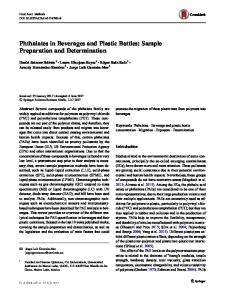TEM Sample Preparation and FIB-Induced Damage
- PDF / 2,071,213 Bytes
- 8 Pages / 585 x 783 pts Page_size
- 60 Downloads / 434 Views
5/7/07
6:17 PM
Page 400
TEM Sample
Preparation and FIB-Induced Damage
Joachim Mayer, Lucille A. Giannuzzi, Takeo Kamino, and Joseph Michael Abstract One of the most important applications of a focused ion beam (FIB) workstation is preparing samples for transmission electron microscope (TEM) investigation. Samples must be uniformly thin to enable the analyzing beam of electrons to penetrate. The FIB enables not only the preparation of large, uniformly thick, sitespecific samples, but also the fabrication of lamellae used for TEM samples from composite samples consisting of inorganic and organic materials with very different properties. This article gives an overview of the variety of techniques that have been developed to prepare the final TEM specimen. The strengths of these methods as well as the problems, such as FIB-induced damage and Ga contamination, are illustrated with examples. Most recently, FIB-thinned lamellae were used to improve the spatial resolution of electron backscatter diffraction and energy-dispersive x-ray mapping. Examples are presented to illustrate the capabilities, difficulties, and future potential of FIB.
Introduction Whereas the initial development of focused ion beam (FIB) instruments was driven by their unique capabilities for computer chip repair and circuit modification in semiconductor technology, present FIB applications support a much broader range of scientific and technological disciplines (for an overview, see Reference 1). However, despite their huge potential in many different areas, ranging from top-down structuring in nanotechnology to tomographic characterization in complex microstructures, many FIBs are largely used to prepare transmission electron microscope (TEM) cross-section sample lamellae. This article explores why FIB preparation of TEM samples in many laboratories has largely displaced ion millers despite the enormous financial investment and the artifacts created by FIBinduced damage. The main advantages of using an FIB for TEM specimen preparation are
400
䊏 No other technique can select the target area as precisely as FIB; that is, with care, lamellae can be prepared with a spatial accuracy of within ~20 nm. 䊏 FIB preparation is fast and reliable; in as little as 20 minutes and within a maximum of 2–4 hours, specimens of an almost unlimited range of materials can be prepared. 䊏 FIB preparation techniques are virtually independent of the nature of the material. Owing to the special geometry and the specific properties of the protective cover on the surface, the milling procedures require only minor adjustments, if at all, that are dependent on the bulk properties of the material. Special techniques for semiconductors have been developed that offer optimized solutions in terms of speed, reliability, damage removal, or total electron transparent area. On the other hand, it is widely recognized that FIB specimen
preparation can be applied to almost any material type—hard, soft, or combinations thereof. The number of materials for which successful TEM sample
Data Loading...










